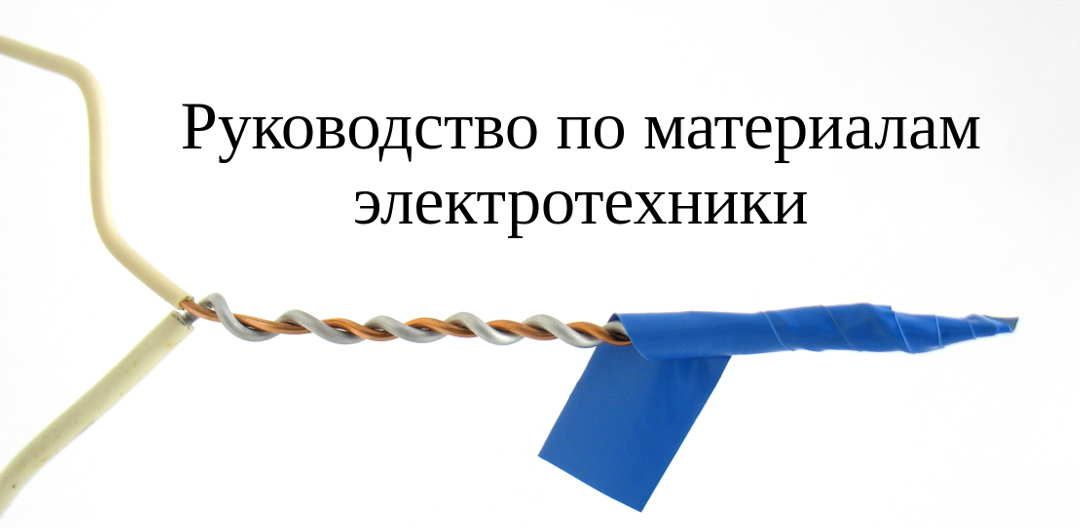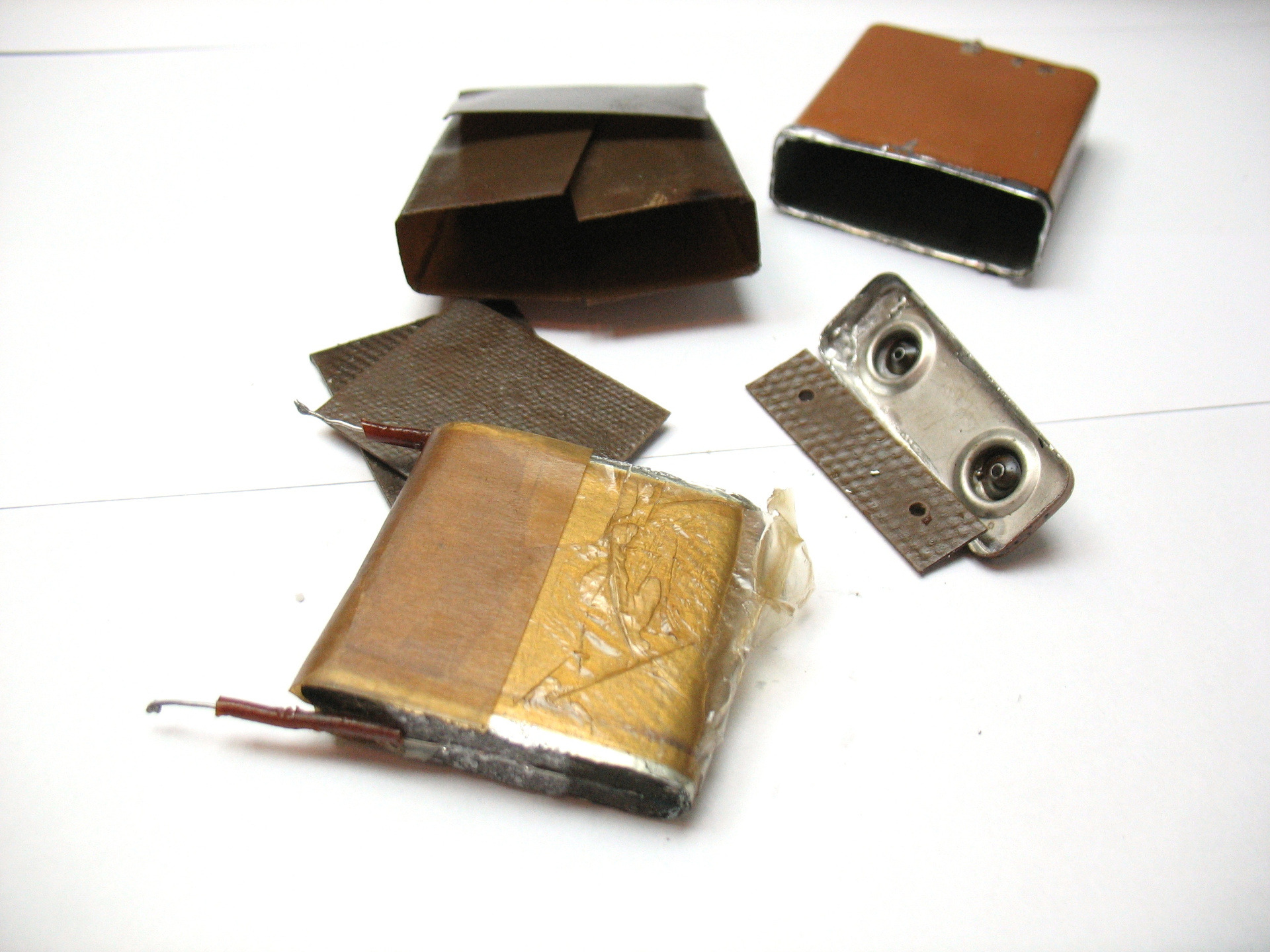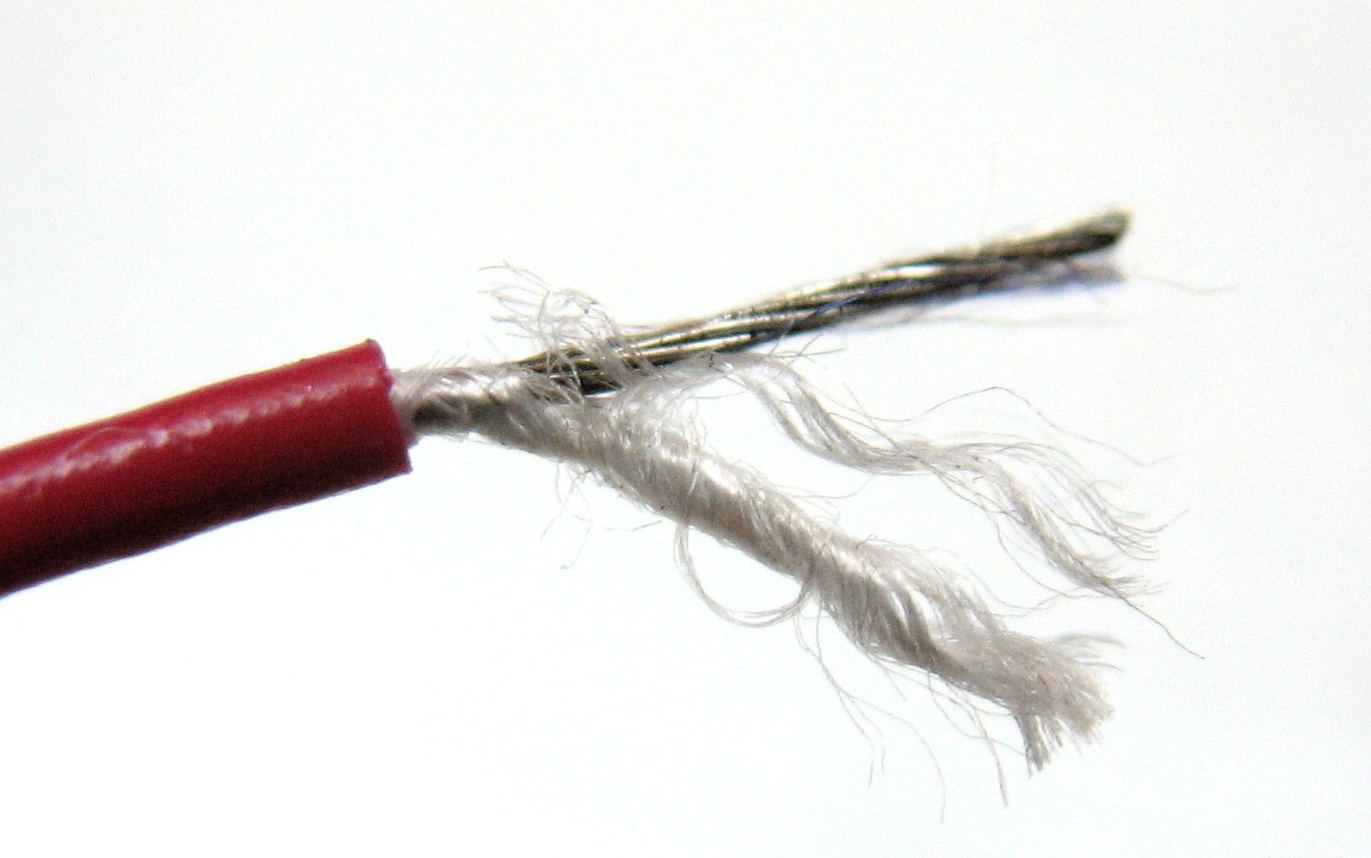Guide to electrical materials for all. Part 5
Continuing guidance on electrical materials. In this part, we continue to disassemble dielectrics, a part is devoted to organic semi-synthetic dielectrics: paper, silk, paraffin, oil, wood.

Welcome to CAT (TRAFFIC)
Different paper grades (For example: Condenser paper, Cable paper, Telephone paper, Crepe paper, various grades.) Were widely used in electrical engineering, ranging from thin capacitor paper (the thickness of such paper can be 1 µm, GOST 1908-88) as a dielectric capacitor plates, ending with a thick electrical card, from which the coil shells of transformers were made. The emergence of cheap polymer films almost completely replaces the paper from the main applications.


Paper capacitors and their contents are a thick cylinder made of tightly rolled paper with metallization.
The paper has a big drawback - hygroscopicity, drawing water out of the air, the electrical insulating properties are reduced, therefore, it is most often impregnated with wax, transformer oil, etc. Currently displaced from a variety of applications with plastic films and sheets.

Contents of another paper capacitor. Visible paraffin-oil impregnation. The condenser itself is insulated from the walls with a thick electric card.
Paper due to its fibrous structure lends itself well to impregnation and holds liquid dielectrics well. The relative advantage of paper is heat resistance, with increasing temperature paper does not melt and does not flow, but will only be charred.

The transformer is from a microwave, the insulation of the windings from the core is made of paper, followed by impregnation.
Silk is usually understood as synthetic fiber. Most often used as
additional to the main insulation.

MGSHV brand wire (MGSHV - Mounting Flexible (multi-wire core) Silk insulation, Vinyl insulation.) Has two insulation - from polyester yarn and from PVC.

Coil of magnet wire of PELSHO brand (PELSHO - Wire with Enamel Varnish-resistant coating and Single-Layer Silk Winding.)
Also, for decorative purposes, the wire may have an outer braid made of artificial thread.
- from nylon, nylon.
Used for impregnation of transformers, especially with paper insulation. When overloaded, such a transformer begins to “cry” with paraffin - this is a sure sign that it should be turned off, as it will be worse in the future.
The general trend to reduce the size of the equipment and increase the operating temperature makes manufacturers replace the fusible paraffin with synthetic compounds.
In the absence of access to polymer casting compounds, impregnation of the product with paraffin
- the most affordable way to increase the resistance of the product to moisture among homemade. Thermal and mechanical resistance are close to zero. So that when the impregnation does not remain inside
air bubbles, if possible it is better to do in a vacuum.
Liquid dielectric. Transformer oil is high purity and low oil.
viscosity. Used as a dielectric and coolant in electric machines, trans-
formatters.
Attention! Transformer oil may contain fairly toxic additives (including in the form of contaminants, rather poorly rinsed containers.), Including extremely toxic polychlorobiphenyl. Therefore, the stupidest thing that can come to mind is the use of transformer oil for other purposes - as fuel, lubricating oil, etc. The old transformer may contain pure polychlorinated biphenyl (produced, for example, under the name "sovol" or " sovtol "). At present, the use of polychlorinated biphenyls in new transformers is prohibited, but old transformers and oil capacitors are found everywhere.
To “drown” transformers and other components in transformer oil is the easiest way to adjust cooling and increase electrical strength when assembling high-voltage devices on their own (to supply Tesla's transformer, X-ray tubes, etc.). The main advantage of this method is that oil fills all intervals, even complex shape, and get rid of air bubbles is much easier than when pouring paraffin or epoxy.
The transparency of the oil, its better thermal conductivity compared to air, is sometimes used when modding a PC — all components of the computer — motherboard, processor, power supply, etc. In addition to HDD and carriers, they are installed in the aquarium and filled with clear oil (google pictures on “Modding in oil”).
The widely used material, though almost not used in electronic technology. It is a wood veneer (plywood) or sawdust (chipboard - chipboard) glued with phenol-formaldehyde resin, and pressed into plates. Plywood - more durable material than chipboard. Due to the mutually perpendicular orientation of the direction of the fibers in the layers, plywood has equal strength in all directions, which makes the plywood a sufficiently strong material. Previously, plywood cases were made of plywood (the old tube TVs had a plywood / chipboard case). But the combustibility, swelling from moisture played a role, and this material is not used more massively. Plywood, MDF (wood fiber glued with urea-formaldehyde resins) are still used for the manufacture of audio equipment enclosures - speakers, amplifiers, where the acoustic properties of the material are important, as well as, together with the veneer of precious wood, to decorate expensive equipment.
Nevertheless, plywood is a convenient material for prototyping low-voltage devices, and many devices that have been commercially successful on the market were once a handful of pieces of hardware assembled on plywood. With the advent of laser cutters, plywood began to be widely used by amateurs for the manufacture of device housings and simple mechanical structures, since it is sufficient to simply draw a drawing on a computer, according to which the cutter cuts out all the details automatically.
On sale is found plywood poplar, beech and birch of different varieties. The grade of plywood is denoted by two numbers through a fraction, for example 2/4, which means that a sheet of plywood is of the 2nd grade on the one hand and 4th grade on the other. Top grades - smooth and knotless, suitable for furniture, veneer stickers. The 3rd variety can have large knots, and the 4th one can have holes from dropped knots, which makes it suitable only for fences. However, from a large sheet of bad plywood, you can try to choose a good piece. For laser cutting and sawing with a jigsaw, they mainly use poplar, which is soft and gives a very smooth surface when grinding. More solid and expensive birch is suitable for strong frames, thick cases, furniture. Sheets of such plywood are up to 40 mm thick and are essentially a ready-made worktop for a workbench, you just need to round the edges. There is waterproof plywood (usually laminated brown and on one side often with grooved, so that the objects on it do not slip), flexible plywood and plywood, covered directly in the factory with veneer of precious wood. You can buy all this at specialized firms, in regular stores this is extremely rare.
In the next part, fully synthetic organic dielectrics (plastics).
1 : Conductors: Silver, Copper, Aluminum.
2 : Conductors: Iron, Gold, Nickel, Tungsten, Mercury.
3 : Conductors: Carbon, nichrome, thermostable alloys, solders, transparent conductors.
4 : Inorganic dielectrics: Porcelain, glass, mica, ceramics, asbestos, gas and water.
5 : Organic semi-synthetic dielectrics: Paper, click, paraffin, oil and wood.
6 : Synthetic dielectrics based on phenol-formaldehyde resins: carbolite (bakelite), getinax, textolite.
7 : Dielectrics: Glass fiber (FR-4), varnished cloth, rubber and ebonite.
8 : Plastics: polyethylene, polypropylene and polystyrene.
9 : Plastics: polytetrafluoroethylene, polyvinyl chloride, polyethylene terephthalate and silicones.
10 : Plastics: polyamides, polyimides, polymethyl methacrylate and polycarbonate. History of the use of plastics.
11 : Insulating tapes and tubes.
12 : Final

Welcome to CAT (TRAFFIC)
Paper, cardboard
Different paper grades (For example: Condenser paper, Cable paper, Telephone paper, Crepe paper, various grades.) Were widely used in electrical engineering, ranging from thin capacitor paper (the thickness of such paper can be 1 µm, GOST 1908-88) as a dielectric capacitor plates, ending with a thick electrical card, from which the coil shells of transformers were made. The emergence of cheap polymer films almost completely replaces the paper from the main applications.


Paper capacitors and their contents are a thick cylinder made of tightly rolled paper with metallization.
The paper has a big drawback - hygroscopicity, drawing water out of the air, the electrical insulating properties are reduced, therefore, it is most often impregnated with wax, transformer oil, etc. Currently displaced from a variety of applications with plastic films and sheets.

Contents of another paper capacitor. Visible paraffin-oil impregnation. The condenser itself is insulated from the walls with a thick electric card.
Paper due to its fibrous structure lends itself well to impregnation and holds liquid dielectrics well. The relative advantage of paper is heat resistance, with increasing temperature paper does not melt and does not flow, but will only be charred.

The transformer is from a microwave, the insulation of the windings from the core is made of paper, followed by impregnation.
Silk
Silk is usually understood as synthetic fiber. Most often used as
additional to the main insulation.

MGSHV brand wire (MGSHV - Mounting Flexible (multi-wire core) Silk insulation, Vinyl insulation.) Has two insulation - from polyester yarn and from PVC.

Coil of magnet wire of PELSHO brand (PELSHO - Wire with Enamel Varnish-resistant coating and Single-Layer Silk Winding.)
Also, for decorative purposes, the wire may have an outer braid made of artificial thread.
- from nylon, nylon.
Wax, paraffin wax
Used for impregnation of transformers, especially with paper insulation. When overloaded, such a transformer begins to “cry” with paraffin - this is a sure sign that it should be turned off, as it will be worse in the future.
The general trend to reduce the size of the equipment and increase the operating temperature makes manufacturers replace the fusible paraffin with synthetic compounds.
In the absence of access to polymer casting compounds, impregnation of the product with paraffin
- the most affordable way to increase the resistance of the product to moisture among homemade. Thermal and mechanical resistance are close to zero. So that when the impregnation does not remain inside
air bubbles, if possible it is better to do in a vacuum.
Transformer oil
Liquid dielectric. Transformer oil is high purity and low oil.
viscosity. Used as a dielectric and coolant in electric machines, trans-
formatters.
Attention! Transformer oil may contain fairly toxic additives (including in the form of contaminants, rather poorly rinsed containers.), Including extremely toxic polychlorobiphenyl. Therefore, the stupidest thing that can come to mind is the use of transformer oil for other purposes - as fuel, lubricating oil, etc. The old transformer may contain pure polychlorinated biphenyl (produced, for example, under the name "sovol" or " sovtol "). At present, the use of polychlorinated biphenyls in new transformers is prohibited, but old transformers and oil capacitors are found everywhere.
To “drown” transformers and other components in transformer oil is the easiest way to adjust cooling and increase electrical strength when assembling high-voltage devices on their own (to supply Tesla's transformer, X-ray tubes, etc.). The main advantage of this method is that oil fills all intervals, even complex shape, and get rid of air bubbles is much easier than when pouring paraffin or epoxy.
The transparency of the oil, its better thermal conductivity compared to air, is sometimes used when modding a PC — all components of the computer — motherboard, processor, power supply, etc. In addition to HDD and carriers, they are installed in the aquarium and filled with clear oil (google pictures on “Modding in oil”).
Plywood, chipboard
The widely used material, though almost not used in electronic technology. It is a wood veneer (plywood) or sawdust (chipboard - chipboard) glued with phenol-formaldehyde resin, and pressed into plates. Plywood - more durable material than chipboard. Due to the mutually perpendicular orientation of the direction of the fibers in the layers, plywood has equal strength in all directions, which makes the plywood a sufficiently strong material. Previously, plywood cases were made of plywood (the old tube TVs had a plywood / chipboard case). But the combustibility, swelling from moisture played a role, and this material is not used more massively. Plywood, MDF (wood fiber glued with urea-formaldehyde resins) are still used for the manufacture of audio equipment enclosures - speakers, amplifiers, where the acoustic properties of the material are important, as well as, together with the veneer of precious wood, to decorate expensive equipment.
Nevertheless, plywood is a convenient material for prototyping low-voltage devices, and many devices that have been commercially successful on the market were once a handful of pieces of hardware assembled on plywood. With the advent of laser cutters, plywood began to be widely used by amateurs for the manufacture of device housings and simple mechanical structures, since it is sufficient to simply draw a drawing on a computer, according to which the cutter cuts out all the details automatically.
On sale is found plywood poplar, beech and birch of different varieties. The grade of plywood is denoted by two numbers through a fraction, for example 2/4, which means that a sheet of plywood is of the 2nd grade on the one hand and 4th grade on the other. Top grades - smooth and knotless, suitable for furniture, veneer stickers. The 3rd variety can have large knots, and the 4th one can have holes from dropped knots, which makes it suitable only for fences. However, from a large sheet of bad plywood, you can try to choose a good piece. For laser cutting and sawing with a jigsaw, they mainly use poplar, which is soft and gives a very smooth surface when grinding. More solid and expensive birch is suitable for strong frames, thick cases, furniture. Sheets of such plywood are up to 40 mm thick and are essentially a ready-made worktop for a workbench, you just need to round the edges. There is waterproof plywood (usually laminated brown and on one side often with grooved, so that the objects on it do not slip), flexible plywood and plywood, covered directly in the factory with veneer of precious wood. You can buy all this at specialized firms, in regular stores this is extremely rare.
In the next part, fully synthetic organic dielectrics (plastics).
Links to parts of the manual:
1 : Conductors: Silver, Copper, Aluminum.
2 : Conductors: Iron, Gold, Nickel, Tungsten, Mercury.
3 : Conductors: Carbon, nichrome, thermostable alloys, solders, transparent conductors.
4 : Inorganic dielectrics: Porcelain, glass, mica, ceramics, asbestos, gas and water.
5 : Organic semi-synthetic dielectrics: Paper, click, paraffin, oil and wood.
6 : Synthetic dielectrics based on phenol-formaldehyde resins: carbolite (bakelite), getinax, textolite.
7 : Dielectrics: Glass fiber (FR-4), varnished cloth, rubber and ebonite.
8 : Plastics: polyethylene, polypropylene and polystyrene.
9 : Plastics: polytetrafluoroethylene, polyvinyl chloride, polyethylene terephthalate and silicones.
10 : Plastics: polyamides, polyimides, polymethyl methacrylate and polycarbonate. History of the use of plastics.
11 : Insulating tapes and tubes.
12 : Final
All Articles